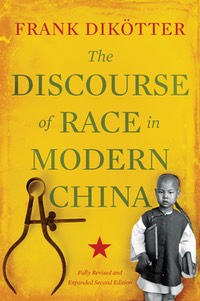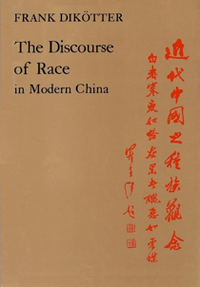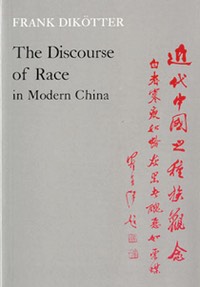Theories of evolution fostered the search for original purity. Visions of an unpolluted race were projected into an idealized past to compensate for the nation's degraded position in the new world order created by the West. Science and myth wove a fabric on which the frustrated mind could visualize its fantasies. Wei Juxian, for instance, published an important article in the journal Forward on the origins of the Han race. Wei was born in 1898, was attached to the Beijing Normal University as a researcher, and accepted a professorship at Jinan University in Shanghai in 1933. He had numerous official positions and was considered a specialist in the conservation of antiquities. After the communist takeover in 1949 he moved to Taiwan, where he distinguished himself by writing a study on the Chinese discovery of America and a work on anthropology. In his 1933 article, Wei identified the Xia as the genuine descendants of the Yellow Emperor. The Xia were closely related to the Caucasians; many historical documents were produced to demonstrate that they had deep-set eyes, high noses and beards similar to that of the Aryans. 'The Xia race's physical appearance, language, customs, and clothes are all similar to those of the Aryan race, of which those who are heavily bearded are Caucasians.' The Yin descended from the Emperor Yan and had intermarried with the Xia to generate the actual Han race. Wei situated the Xia's original homeland in the Caucasus; they were a white and pure race. The Yin were red barbarians from an area of China now known as Sichuan province. The mixing of white and red had given birth to the yellow Han. Wei Juxian maintained the myth of purity by locating the source of pollution in an alien group: southern barbarians had undermined the original purity of the divine descendants of the Yellow Emperor.
Chinese scientists of international repute were also in search of purity. Li Chi published The formation of the Chinese people: An anthropological inquiry with Harvard University Press in 1928. Li contested the idea that the Chinese had been an unchanging and homogeneous race. He began by gathering all the data available on Chinese skulls, and found that 14.41 per cent were dolichocephalic (a long and narrow shaped head), 42.12 per cent mesocephalic (an intermediate shape) and only 43.47 per cent brachycephalic (a broad shaped head). Li also measured noses, and discovered that the platyrrhinic type (flat nose) was a minor element in the physical make-up of Chinese physical traits. Results were then distributed by province. Li then reconstructed the routes along which cities had evolved in order to follow the historical movements of the 'We-group'. This painstaking exercise was based on the records of 4,478 city walls, thus enabling building activity in different provinces at different periods to be charted. In a chapter on surnames Li assumed that Chinese surnames of the same origin denoted a blood-relationship. The term 'We-group' came to signify the 'Descendants of the Yellow Emperor': Li attempted to disentangle the original surnames created by the Yellow Emperor from the surnames of other tribes. He classified 4,657 names on the basis of ethnic and geographical significance in sixty-two maps. Finally, he took the study of the migration of the Yellow Emperor's descendants further by investigating the census figures appearing in the official dynastic histories of China. The conclusion Li Chi drew from all the evidence he had gathered so meticulously was that the prevalent type of the 'original race' was brachycephalic-leptorrhine. A group of narrow-headed Tungus were responsible for diluting the divine race of the Yellow Emperor by intermarriage. The Tungus were a group of peoples from Siberia of which the Manchus were thought to be a branch. Li Chi ended his inquiry on a note of hope: 'In the future one may expect a continued leptorrhinization of the south and a rebrachycephalization of the north', a process by which the pure type of the Yellow Emperor would come to replace the inferior elements of China's racial composition. The cruder discursive levels of race as lineage and race as nation were legitimized and transformed into theories by Li Chi.
Archaeologists, too, sought evidence of human beginnings in China. Lin Yan, for instance, carefully examined all the theories that traced the origins of the 'Chinese race' to alien migrations: all lacked 'scientific proof'. Like many of his contemporaries, he cited the discovery of Beijing Man at Zhoukoudian as evidence that the 'Chinese race' had existed on the soil of the Middle Kingdom since the earliest stage of civilization. Excavations supported his hypothesis by demonstrating that migrations had taken place only within the empire. It was concluded that China was inhabited by 'the earth's most ancient original inhabitants'. Science was infused into age-old myths to revitalize sinocentric beliefs that could provide the sense of continuity that was so essential in an age of anxiety: it rationalized the construct of race.
Zhang Junjun's search for purity revolved around the concept of blood. Zhang was born in 1897 in Hunan province, taught anthropology at Jinan University in Shanghai, and became a popular writer on the idea of racial degeneration. He studied psychology with Woodworth at Columbia University, but read anthropology and eugenics -- the pseudo-science of race improvement -- in his spare time. The premise of Zhang's approach was that all the ancestors of the Han race had O group blood flowing in their veins, a purity subsequently vitiated by racial mixing with inferior barbarians. Each province was analyzed and classified according to blood type. The A group was predominant in the north, where the original O group had been bastardized by frequent barbarian invasions. In Jiangsu and Zhejiang provinces, however, the O group was found in more than 50 per cent of the population, whereas in the south it hovered around 40 per cent. The results of Zhang's inquiry into the Chinese blood composition demonstrated that the nation was a mixed association of an original race, preserved mainly in the region of the Yangzi River (Jiangsu and Zhejiang), and a variety of barbarian tribes.
The topographical mapping of purity led to the localization of genius. 15,089 famous historical personages, supposed to be representative of the Chinese intellect, were classified by province. The majority, unsurprisingly, came from Jiangsu (2,428) and Zhejiang (1,974), the two provinces where the original race was supposed to be best preserved, ranking far above other regions (Hunan held third place with 1,200 historical figures; at the bottom was Heilongjiang province with a pathetic dozen). Zhang thus reconstructed the itinerary of the Han race: the first branch of healthy and superior (youxiu) Han, taught by the Gods and blessed by Heaven, had moved into the Yellow River region. Barbarian invasions, famine and internecine wars had caused migrations towards the region around the Yangzi River. During both phases, the original race had degenerated by intermarriage with inferior races.

Like many other intellectuals of the 1930s, Zhang Junjun was inspired by the pioneering study of Liang Boqiang on the Han race's blood. Liang took the blood's 'index of agglutination' as an indicator of purity. He maintained that the Han race was 'purer' in the south, where it had never intermarried with barbarians. The index of Guangdong province, for instance, was the highest in the country.
The idea of degeneration by infusions of inferior blood was not universally accepted. The historian Gu Jiegang emphasized the potential contributions of non-Han peoples through both cultural admixtures and biological amalgamation. Lin Yutang, professor of literature, journalist and writer of popular books, was also a typical exponent of the theory of 'blood infusion'. In his widely read My country and my people he could certify that each foreign invasion had been conducive to 'a kind of phylogenetic monkey-gland grafting [sic], for one observes a new bloom of culture after each introduction of new blood.' The nation's racial vigour was explained by the periodic addition of fresh plasma, a phenomenon thought to have occurred with striking regularity in Chinese history.




